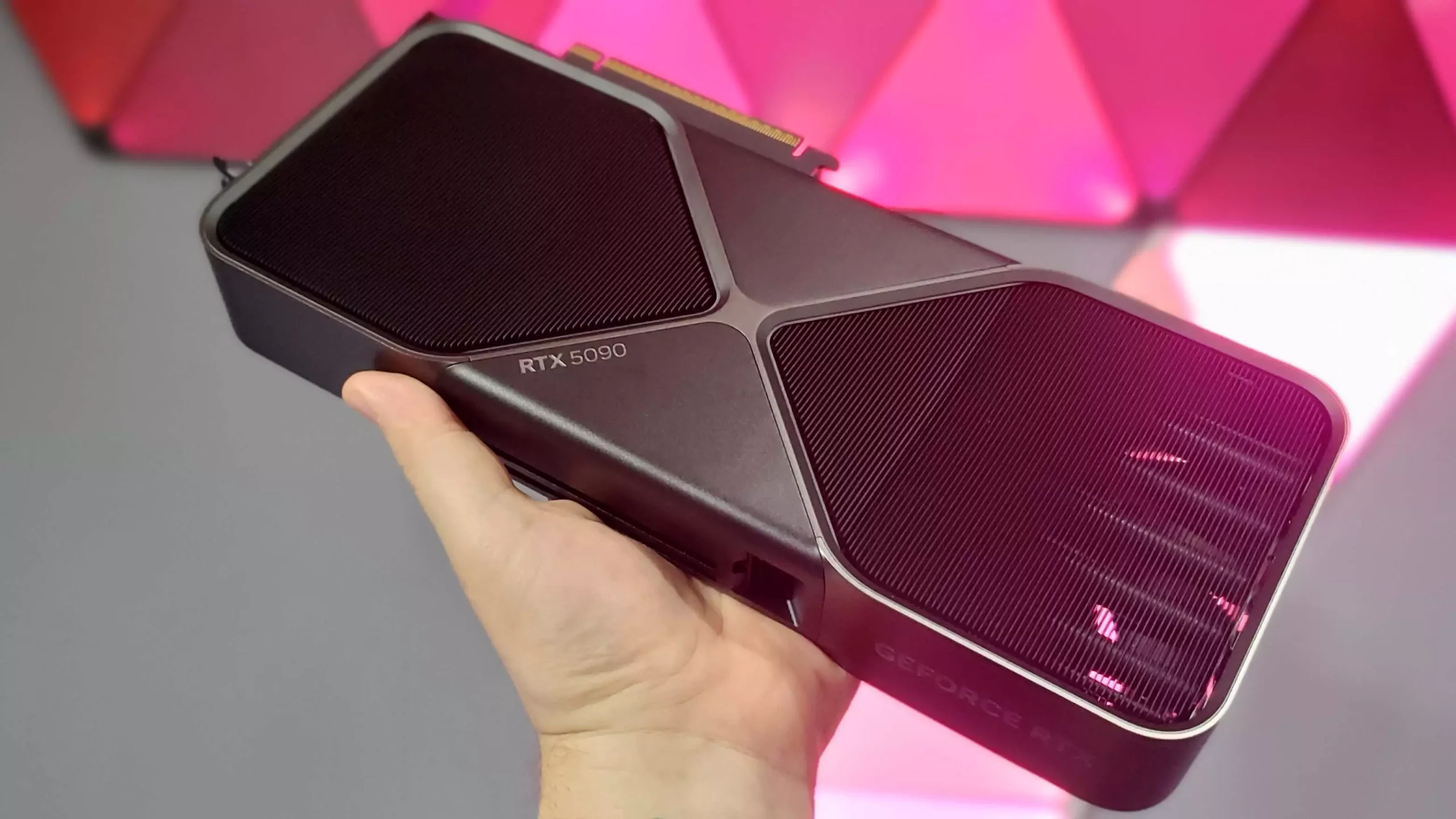The graphics card market is witnessing a cascading transformation, particularly after the tumultuous era that followed the cryptocurrency boom and the global pandemic. As of 2023, less than six months post the much-anticipated launch of Nvidia’s RTX 5090 on January 30, consumers are finally seeing the light at the end of the tunnel. For the first time, it is possible to purchase an RTX 5090 for slightly under the manufacturer’s suggested retail price (MSRP) in certain regions. However, this notable shift comes with a caveat: the disparity in pricing across different markets reveals an uneven landscape.
In the UK, the RTX 5090 was introduced at an MSRP of £1,889, but Overclockers UK lists the Palit GeForce RTX 5090 GameRock 32GB for £1,879.99. While this price is marginally below the recommended retail price, the significance of this development cannot be overstated. In stark contrast, consumers in the United States are still grappling with scarce availability at the $1,999 price point, often encountering exorbitant markups—like the staggering $2,919.99 currently seen at Newegg. This disparity raises questions about demand, supply, and the internal workings of the graphics card market.
Regional Pricing Wars: The Case of Finland
Across the pond in Finland, the RTX 5090 was spotted for 2,299 Euros, which positions it strategically below the official 2,339 Euros MSRP—there was, however, a momentary slip in the pricing on an etailer which showed it at a mere 2,399 Euros, indicating a persistence of inflated costs. Such discrepancies not only illustrate the effects of market fluctuations but also signify a gradual move towards price normalization. There is a remarkable irony here: as manufacturers attempt to stabilize prices, retail strategies fluctuate significantly, often leading consumers to feel more frustrated than relieved.
While some regions experience price drops, others remain mired in inflated costs. For instance, the AMD Radeon RX 9070 XT persists at a price point exceeding its £560 MSRP, with the cheapest options advertised at £660. This inconsistent pricing across AMD cards compared to Nvidia’s offerings calls into question the overall strategies employed by the respective companies amid this shifting market.
Normalization of GPU Prices: More Than Just a Trend
The movement toward more accessible pricing is not merely a product of random market behavior; it marks the end of a prolonged period of inflated costs driven by a frenzy of demand fueled by crypto mining, scalping, and supply chain disruptions. Over the past few years, these elements combined to create a perfect storm, and they result in severe consequences for average consumers. What we are now witnessing is not just a fluctuation; it represents a major market correction that can potentially redefine consumer engagement with gaming hardware.
In the UK, the entire Nvidia RTX 50 series lineup offers competitive pricing that has been absent for so long, making it a favorable scenario for gamers and creative professionals alike. However, that upward trajectory of normalisation hasn’t permeated the US market as effectively. Though analysts speculate it could be a product of various factors—including tariffs and hoarding behaviors—there remains a strong possibility for improvement as global supply chains stabilize.
The Role of Tariffs and Future Projections
One of the most pressing hurdles faced by US consumers in terms of GPU pricing is the phenomenon of tariffs. With the Trump administration’s policies shifting unpredictably, it leaves consumers in a state of uncertainty regarding future price points. The interplay between international trade policies and the domestic retail market is complex, often impacting both stock availability and consumer pricing.
Looking ahead, there is room for optimism. If tariffs were to normalize and no further unexpected shocks to the market occur, the United States could ultimately trend towards MSRP pricing along with Europe and other markets. However, this is contingent upon numerous unpredictable factors, and the future of the GPU market remains as volatile as ever.
What is abundantly clear is this: the time for rejoicing is upon us, albeit with a cautious lens towards the road ahead. The rebirth of reasonable pricing in the graphics card segment is a victory for consumers who have been inundated with outrageously inflated costs—and a hint at a brighter, more stable future for gaming hardware.

